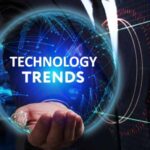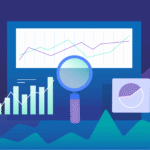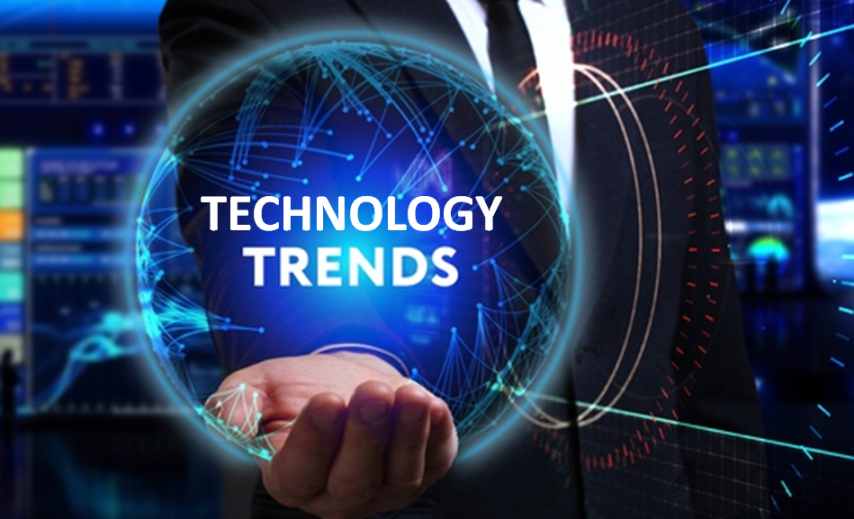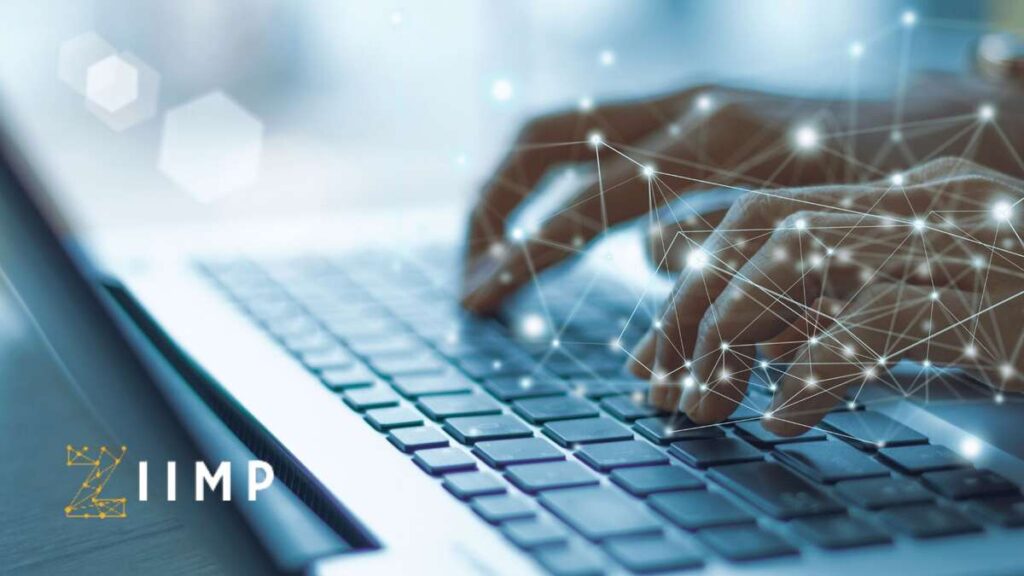Technology changes fast, and 2025 brings new ideas that will affect how we live and work. This blog post looks at the top emerging tech trends shaping 2025. It gives you clear details on each trend, so you can understand what they mean for you. We cover eight key areas based on reports from experts like Gartner and others. Each section explains the trend, its developments, impacts, examples, and challenges. By the end, you will have a full picture of these trends and how to prepare for them.
These trends come from recent studies and show how tech is moving forward. They include advances in AI, computing power, security, and more. Businesses and people who keep up with these can find new chances. Now, let’s look at each one.
Agentic AI
What Is Agentic AI?
Agentic AI refers to smart systems that act on their own to reach goals set by users. Unlike basic AI that just answers questions, agentic AI plans steps, makes choices, and carries out tasks without constant help. It uses tools like web searches or apps to get things done. For instance, if you ask it to book a trip, it checks flights, hotels, and weather, then confirms with you. This tech builds on large language models but adds action layers. It learns from past actions to improve over time. In 2025, agentic AI will become more common in daily tools, making life easier.
This trend stands out because it turns AI into a helper that works like a team member. It handles complex jobs by breaking them into parts. Safety features ensure it stays within rules set by users. As it grows, it could change how we use software, from personal assistants to business tools.
Key Developments Expected in 2025
In 2025, agentic AI will see big steps forward in reliability and use cases. Companies plan to add it to virtual workforces, where AI agents handle routine jobs like data entry or customer support. Advances in multi-agent systems mean several AIs work together on one task, like planning events or research. Integration with real-world devices, such as smart homes, will grow too. Expect better error handling, so agents fix mistakes on their own. Gartner points out that this will create a “virtual workforce” to boost output. Open-source tools will make it easier for small firms to build their own agents.
Progress in natural language understanding will let agents grasp context better. This means fewer misunderstandings in commands. Security updates will protect against misuse, like unauthorized actions. Overall, 2025 marks the year agentic AI moves from tests to real use in many fields.
How It Impacts Businesses and Society
Agentic AI will change businesses by cutting costs and speeding up work. Firms can assign repetitive tasks to AI, freeing staff for creative roles. This leads to higher efficiency and innovation. In society, it helps with access to services, like aiding elderly people with daily needs. However, it might reduce some jobs, so training programs are needed. It also raises questions about trust, as people must rely on AI decisions.
On a larger scale, it supports better decisions in areas like healthcare, where agents analyze patient data for plans. For the environment, agents optimize energy use in buildings. But ethical use is key to avoid bias in actions. Businesses that adopt it early gain an edge in competition.
Practical Examples
One example is in customer service, where agentic AI handles inquiries from start to finish. It pulls info from databases, suggests solutions, and follows up. Another is in finance, where it monitors markets and executes trades based on rules. In education, agents create custom learning paths, adjusting to student progress. Companies like Microsoft are building tools for this, integrating with Office apps for automated reports.
In healthcare, agents schedule appointments, remind patients, and even suggest basic advice based on symptoms. For personal use, apps like virtual planners organize your day, booking rides or meals. These show how agentic AI makes tasks simpler and faster.
Challenges to Watch
A main challenge is ensuring agentic AI acts safely and ethically. Without good controls, it could make wrong choices with big effects. Data privacy is another issue, as agents access personal info. Building trust takes time, as users need to see reliable results. High costs for setup might limit access for small groups.
Technical hurdles include handling complex scenarios where plans fail. Integration with old systems can be hard. Regulations will play a role in guiding use. Addressing these early helps maximize benefits while minimizing risks.
You may also like to read about Ziimp .com Tech.
Quantum Computing
What Is Quantum Computing?
Quantum computing uses quantum bits, or qubits, to process information much faster than regular computers. While normal bits are 0 or 1, qubits can be both at once due to superposition. This allows solving hard problems quickly, like simulating molecules or optimizing routes. It needs special conditions, like very cold temperatures, to work. In 2025, it’s still early, but useful for specific tasks. Simplilearn notes its role in cryptography and drug discovery.
The tech involves entanglement, where qubits link so changing one affects others instantly. This boosts power for calculations. Hardware includes superconducting circuits or trapped ions. Software tools help program these machines. As it matures, it will handle data sets too big for current tech.
Key Developments Expected in 2025
2025 will bring more stable qubits, reducing errors in calculations. Companies like IBM and Google plan larger systems with hundreds of qubits. Hybrid approaches combine quantum with classical computing for practical use. Advances in error correction will make results more accurate. Expect partnerships between tech firms and industries for real applications.
Research in quantum networks will grow, linking machines over distances. This enables shared computing power. New algorithms for optimization and simulation will appear. Governments invest more, speeding progress. Overall, 2025 shifts from theory to early commercial use.
How It Impacts Businesses and Society
For businesses, quantum computing speeds up innovation in fields like materials science, creating better products. It optimizes supply chains, saving money. In society, it aids drug development, leading to faster cures. Climate modeling improves with accurate simulations. However, it threatens current encryption, pushing for new security.
Access might widen gaps if only big firms use it. Education needs updates to train workers. Positive impacts include solving global issues like energy efficiency. Businesses must plan for its arrival to stay competitive.
Practical Examples
In healthcare, quantum computers simulate protein folding to find new drugs. Finance uses it for risk analysis on portfolios. Logistics firms optimize delivery routes in real time. Energy companies model reactions for better batteries. Google’s Sycamore showed supremacy in specific tasks.
In agriculture, it helps design better fertilizers by modeling soil chemistry. These examples highlight its power for complex problems.
Challenges to Watch
Scalability is a big challenge, as building large, stable systems is hard. High costs limit access. Energy use for cooling is significant. Skills shortage means few experts available. Security risks from breaking codes need addressing.
Integration with existing tech requires new standards. Overcoming these will take time and investment.
Spatial Computing
What Is Spatial Computing?
Spatial computing blends digital and physical worlds using AR, VR, and MR. It lets users interact with virtual objects in real spaces. Devices like headsets map environments and overlay info. For example, AR shows directions on your view. VR creates full virtual settings. MR mixes both for interactive experiences. Gartner calls it a key trend for immersive work.
It relies on sensors, cameras, and AI for accurate placement. Software platforms build apps for this. In 2025, better hardware makes it more comfortable and affordable.
Key Developments Expected in 2025
2025 sees lighter, wireless headsets with longer battery life. Integration with AI improves object recognition. New apps for education and retail emerge. 5G support enables shared experiences. Companies like Apple and Meta push updates.
Software tools simplify creation of content. Security features protect user data. Expect growth in enterprise use for training.
How It Impacts Businesses and Society
Businesses use it for remote collaboration, visualizing designs. It boosts sales in e-commerce with virtual try-ons. Society benefits from better learning, like virtual field trips. Healthcare uses it for surgery planning. But screen time concerns rise.
It creates jobs in content creation. Accessibility improves for disabled users. Overall, it makes interactions more natural.
Practical Examples
In retail, AR lets customers see furniture in homes. Training simulations in VR teach skills safely. Gaming offers immersive worlds. Architecture firms visualize buildings on-site.
Education uses MR for interactive lessons. These show its versatility.
Challenges to Watch
Privacy issues from data collection are key. High device costs limit adoption. Motion sickness affects some users. Content creation needs skills. Network demands for real-time use.
Standards for interoperability are needed. Addressing these helps wider use.
Post-Quantum Cryptography
What Is Post-Quantum Cryptography?
Post-quantum cryptography creates encryption safe from quantum attacks. Current methods like RSA can be broken by quantum computers. New algorithms use math problems hard for quantum machines. It protects data in transit and storage. Gartner highlights its importance as quantum tech advances.
It includes lattice-based or hash-based systems. Implementation involves updating software and hardware. In 2025, standards from NIST guide adoption.
Key Developments Expected in 2025
Standards finalize, leading to widespread use. Tools for migration appear. Hybrid systems combine old and new encryption. Testing ensures compatibility.
Governments mandate it for sensitive data. Research improves efficiency.
How It Impacts Businesses and Society
Businesses secure long-term data, avoiding breaches. It builds trust in digital services. Society protects privacy in online transactions. Finance and healthcare benefit most.
It prevents cyber threats from quantum hackers. Preparation now avoids future costs.
Practical Examples
Banks update systems for secure transfers. Cloud providers offer post-quantum options. Governments secure communications. VPNs incorporate it for privacy.
These ensure data safety.
Challenges to Watch
Migration complexity from old systems. Performance overhead slows processes. Lack of experts. Compatibility issues.
Costs for updates. Planning mitigates these.
Energy-Efficient Computing
What Is Energy-Efficient Computing?
Energy-efficient computing focuses on reducing power use in hardware and software. It uses optimized chips, algorithms, and renewable sources. AI training consumes lots of energy, so this trend matters. Gartner notes pressures from laws and society.
Techniques include low-power processors and smart cooling. It applies to data centers and devices.
Key Developments Expected in 2025
New chip designs like neuromorphic reduce energy. Software optimizes code for efficiency. Data centers use green energy. Metrics track carbon footprint.
Partnerships push standards.
How It Impacts Businesses and Society
Businesses save on energy bills, meet regulations. It supports green goals. Society reduces emissions, aiding climate fight.
Innovation in devices extends battery life.
Practical Examples
Cloud services optimize servers. Mobile phones use efficient chips. AI firms train models with less power.
These lower costs and impact.
Challenges to Watch
Initial costs for upgrades. Balancing performance and efficiency. Supply chain for green materials.
Education on best practices.
Polyfunctional Robots
What Is Polyfunctional Robots?
Polyfunctional robots perform multiple tasks, switching easily. They use AI to adapt without major changes. Unlike single-task robots, they handle variety. Gartner sees them improving efficiency.
They include sensors and learning algorithms.
Key Developments Expected in 2025
AI improvements for task switching. Affordable models for small businesses. Integration with human workers.
Safety standards update.
How It Impacts Businesses and Society
Businesses get faster ROI, scalability. Society sees job shifts, but safer work.
Automation in shortage areas.
Practical Examples
In factories, robots assemble and inspect. Warehouses pick and pack. Healthcare assists in care.
These boost productivity.
Challenges to Watch
High setup costs. Programming complexity. Ethical job displacement.
Maintenance needs.
Biotechnology in Agriculture
What Is Biotechnology in Agriculture?
Biotechnology in agriculture modifies crops for better traits using tools like CRISPR. It creates resistant plants for higher yields. Simplilearn mentions addressing climate issues.
It improves nutrition and reduces pesticides.
Key Developments Expected in 2025
New edited crops approved. Tools for faster editing. Focus on sustainability.
Global adoption grows.
How It Impacts Businesses and Society
Farms increase output, cut losses. Society gets better food security.
Environment benefits from less chemicals.
Practical Examples
Drought-resistant corn. Nutrient-rich rice. Pest-resistant vegetables.
These help farmers.
Challenges to Watch
Regulatory approvals. Public acceptance. Access for small farmers.
Biodiversity concerns.
6G Connectivity
What Is 6G Connectivity?
6G is the next wireless standard after 5G, offering ultra-fast speeds and low latency. It supports massive devices and holographic comms. Simplilearn notes its role in connectivity. (though they mention 5G, trends include 6G)
It uses higher frequencies and AI for management.
Key Developments Expected in 2025
Early trials and standards. Integration with AI. Focus on coverage.
Research in terahertz waves.
How It Impacts Businesses and Society
Businesses enable real-time ops. Society gets better remote services.
Advances IoT.
Practical Examples
Autonomous cars communicate. Remote surgery. Smart cities.
These transform services.
Challenges to Watch
Infrastructure costs. Spectrum allocation. Privacy in data flow.
Energy use.
Conclusion: Top Emerging Tech Trends
In summary, these top emerging tech trends shaping 2025 offer big potential. From AI agents to 6G, they promise better efficiency and solutions. Stay informed and adapt to make the most of them. The future looks bright with these advances.
Author Profile
Latest Posts
 TechnologyOctober 7, 2025Top Emerging Tech Trends Shaping 2025
TechnologyOctober 7, 2025Top Emerging Tech Trends Shaping 2025 FinanceOctober 7, 2025Ziimp .com: A Complete Guide to Market and Business News
FinanceOctober 7, 2025Ziimp .com: A Complete Guide to Market and Business News TradingOctober 6, 2025Ziimp .com Trading: A Step-by-Step Resource for Beginners and Pros
TradingOctober 6, 2025Ziimp .com Trading: A Step-by-Step Resource for Beginners and Pros TechnologyOctober 5, 2025Ziimp .com Tech: A Full Guide to Its Tools and Uses
TechnologyOctober 5, 2025Ziimp .com Tech: A Full Guide to Its Tools and Uses




